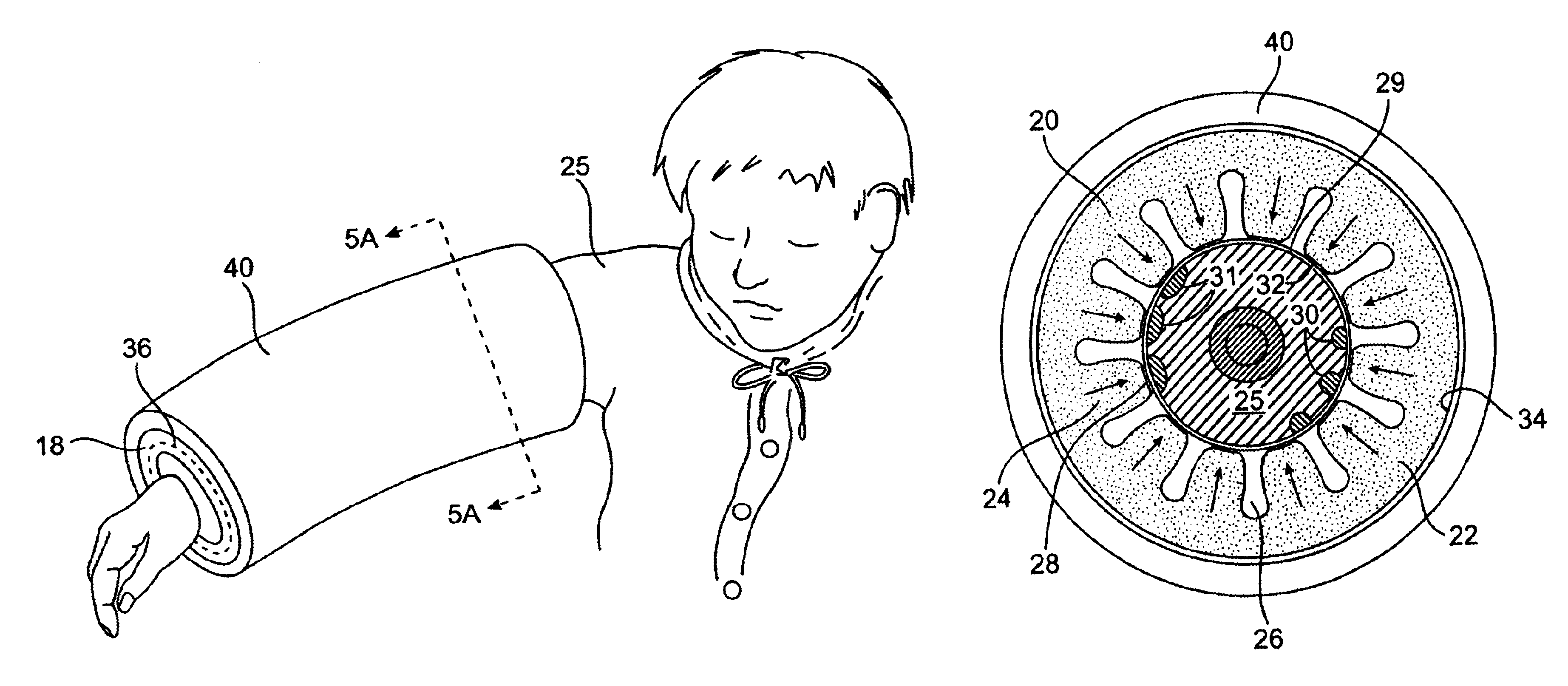Multiple sleeve method and apparatus for treating edema and other swelling disorders
a multi-sleeve, edema technology, applied in the field of medical devices and methods, can solve the problems of not performing very well, affecting the desired distal-to-proximal flow of lymphatic fluid, and affecting the effect of the patient's overall health,
- Summary
- Abstract
- Description
- Claims
- Application Information
AI Technical Summary
Benefits of technology
Problems solved by technology
Method used
Image
Examples
Embodiment Construction
FIG. 1 shows the therapeutic pressure sleeve apparatus 18 of the present invention fitted onto a patient's arm for treating lymphedema. (It is to be understood, however, that the present invention can also be fitted to the patient's leg, hand, foot or torso). As will be explained, sleeve 18 is preferably received within a secondary sleeve which exerts a pressure on sleeve 18 such that an increased therapeutic pressure is applied to the patient's body surface. Various embodiments exist for the secondary sleeve. For example, FIG. 2A shows a thin fabric compression sleeve 40 received over sleeve 18 and FIG. 2B shows an inflatable compression sleeve 50 received over sleeve 18.
As shown in FIG. 3, sleeve 18 is preferably made from a quadrangle of convoluted foam material 20 such as is widely used as an under-sheet lining on mattresses. Specifically, tapered quadrangle 20 of convoluted foam is cut as shown, with the sides 21 being angle-cut so that the edges meet flush when the foam is rol...
PUM
 Login to View More
Login to View More Abstract
Description
Claims
Application Information
 Login to View More
Login to View More - R&D
- Intellectual Property
- Life Sciences
- Materials
- Tech Scout
- Unparalleled Data Quality
- Higher Quality Content
- 60% Fewer Hallucinations
Browse by: Latest US Patents, China's latest patents, Technical Efficacy Thesaurus, Application Domain, Technology Topic, Popular Technical Reports.
© 2025 PatSnap. All rights reserved.Legal|Privacy policy|Modern Slavery Act Transparency Statement|Sitemap|About US| Contact US: help@patsnap.com



